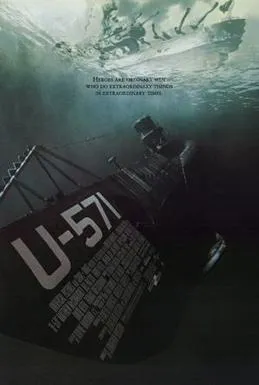Historical accuracy of U-571

Historical accuracy of U-571

Characters
Lt. Andrew Tyler
A fictional character created for the film. His journey and command challenges drive the plot but are not based on a specific real person.
Lt. Cmdr. Mike Dahlgren
A fictional commanding officer, played by Bill Paxton. His role sets up Lt. Tyler's arc.
CPO Henry Klough
A fictional Chief Petty Officer, played by Harvey Keitel, representing experienced enlisted leadership.
Lt. Pete Emmett
A fictional intelligence officer involved in the Enigma mission planning.
Lt. Hirsch
A fictional officer responsible for understanding and operating the captured Enigma machine.
Marine Maj. Coonan
A fictional Marine officer leading the capture team; represents the involvement of Marines in such potential (though fictionalized here) operations.
More characters
Kapitänleutnant Wassner
The fictional German U-boat commander whose boat is disabled and boarded.
Trigger
Fictional crew member played by Jon Bon Jovi.
Rabbit
Fictional enlisted crew member.
Mazzola
Fictional enlisted crew member.
Wentz
Fictional crew member whose language skills become important after capturing the U-boat.
Story
US captures Enigma machine from U-571 (Core Premise)
This central plot is fictional and historically inaccurate. Key Enigma captures enabling codebreaking were achieved primarily by the British Royal Navy (e.g., from U-110 in May 1941) long before the US entered the war or the film's setting (1942). No Enigma was captured from the real U-571.
US submarine (S-33) disguised as German U-boat
The mission premise of disguising an American S-class submarine to resemble a German supply U-boat for a covert operation is fictional.
Boarding disabled German U-boat U-571
The specific event of Americans boarding the disabled U-571 is fictional, tied to the inaccurate Enigma capture plotline.
Sinking of US submarine S-33 by German U-boat
The destruction of the American submarine S-33 during the mission is part of the fictional narrative.
US crew takes command of captured U-571
The plot point of the surviving American crew operating the captured German U-boat is fictional.
Encounters with German naval forces
The specific battles and encounters the crew faces while operating U-571 (e.g., with the German destroyer) are fictional dramatic elements.
Depiction of submarine warfare conditions
While the plot is fictional, the film portrays the cramped, dangerous, and tense conditions of WWII submarine warfare (depth charges, sonar pings, underwater tension) with a degree of technical realism.
Importance of Enigma to Allied victory
The film correctly implies the vital importance of capturing Enigma machines and codebooks for Allied intelligence (ULTRA) in winning the Battle of the Atlantic, although it misattributes the capture itself.
German U-boat operations in Atlantic
Represents the real threat posed by German U-boat wolfpacks to Allied shipping in the Atlantic during WWII.
Need for secrecy regarding Enigma capture
The film correctly reflects the extreme secrecy surrounding Allied codebreaking efforts. Revealing the Enigma compromise would have prompted the Germans to change their codes.
Setting
WWII Atlantic Ocean theatre
Accurately sets the action within the Battle of the Atlantic, the crucial naval campaign of WWII depicted.
Time Period (Implied Spring 1942)
The film is set during WWII, implicitly around 1942 when the Battle of the Atlantic was fiercely contested, although the specific mission is fictional.
US S-Class Submarine (S-33 representation)
The film used a real non-GUPPY Balao-class submarine (USS Pampanito) for exterior shots representing the older S-33, and detailed sets for the interior, providing a realistic visual representation.
German Type IX U-boat (U-571 representation)
Detailed sets and models were used to represent the interior and exterior of a German Type IX U-boat, capturing the look and feel of the vessel type accurately.
Submarine interiors and operation
Captures the cramped, complex, and claustrophobic environment inside WWII submarines, including depictions of diving procedures, engine rooms, torpedo rooms, and sonar operations.
Naval Combat (Depth charges, destroyers)
Realistically portrays the dangers faced by submarines, including depth charge attacks from surface vessels like destroyers, and the tension of underwater evasion.
Military Uniforms (US Navy, Kriegsmarine)
Uniforms worn by the American submariners and German U-boat crews generally appear accurate for the WWII period.
Atmosphere of submarine warfare
Effectively conveys the tension, fear, claustrophobia, and camaraderie associated with service aboard submarines during wartime.
